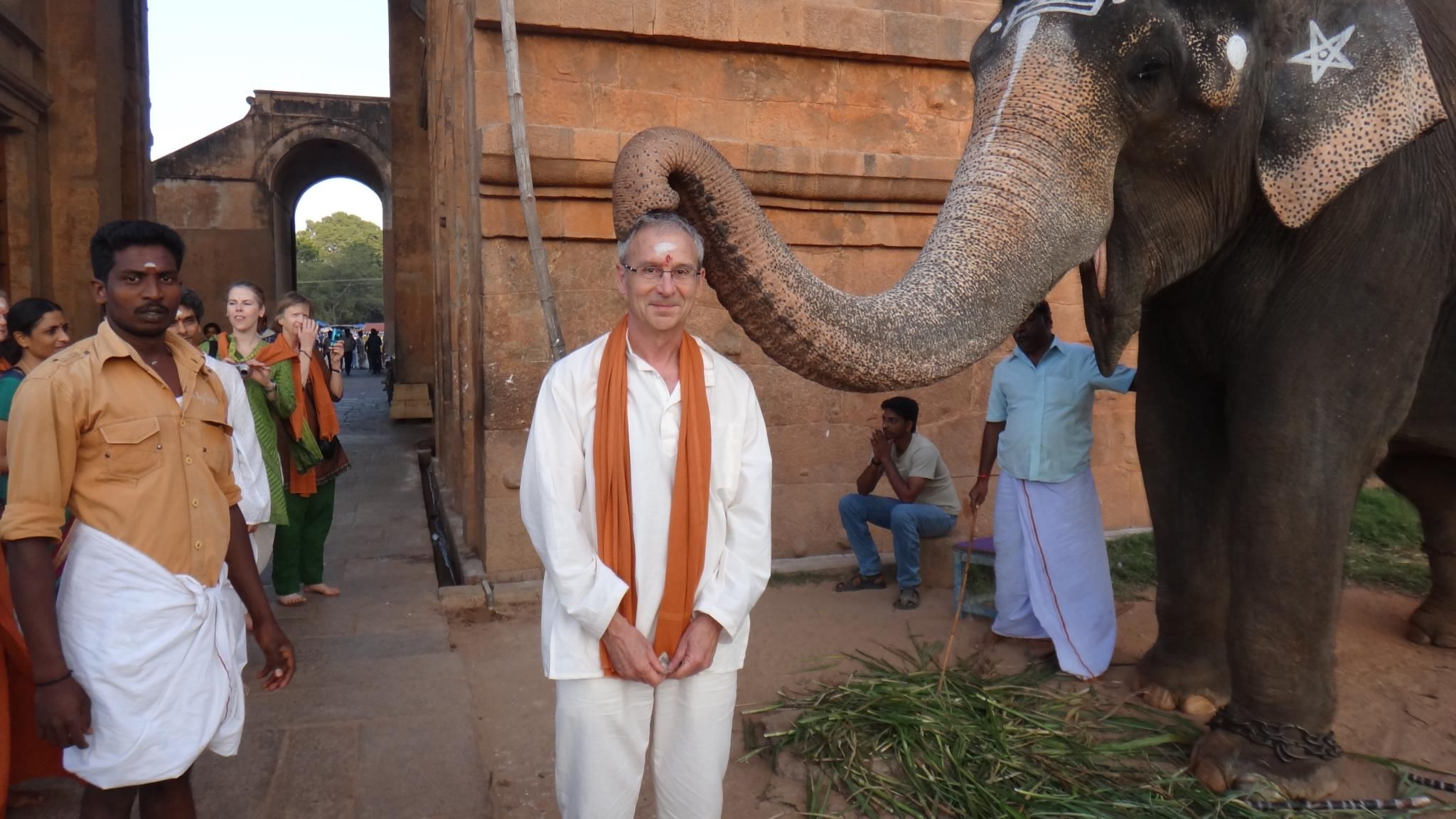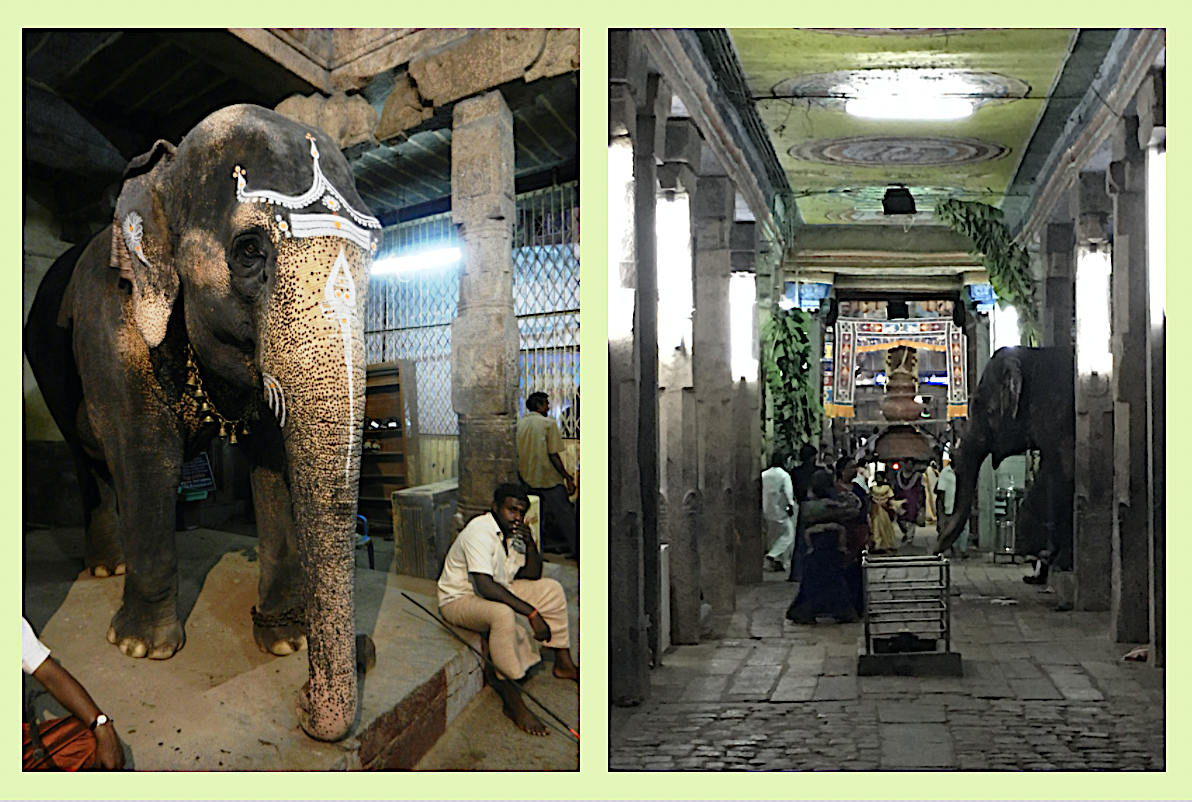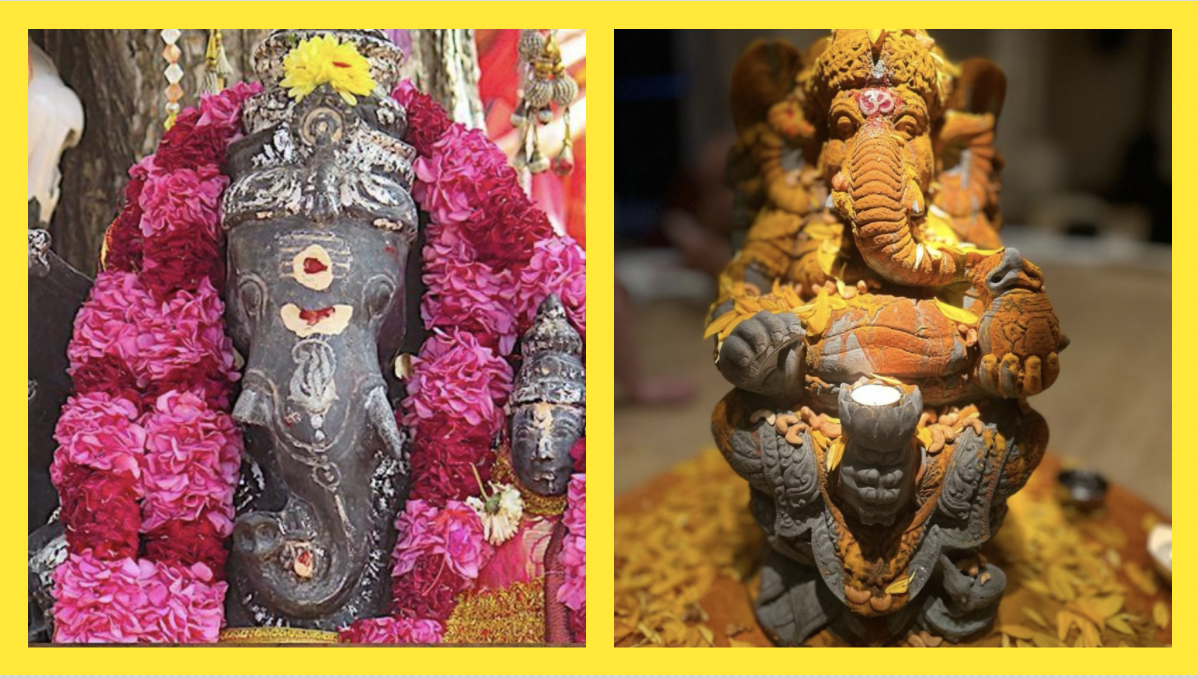Emissaries of Ganesha

While temple elephants might be seen as emissaries of Ganesha, could we, as humans, also explore this possibility? On this pilgrimage of life, what does Ganesha symbolize for us?
One of our secret expectations on pilgrimage is to encounter a temple elephant. Somehow, these elephants are different. Could it be because people approach them as Ganesha, the God of Wisdom and Remover of Obstacles? Could it be because they are trained to bless those who come to them by gently touching their trunk on the bowed head of the devotee?
Although live elephants can draw people to the temple, that is not the intended reason for their presence there. It is their connection to divinity and sacredness that is paramount. The unmistakable connection is to Lord Ganesha, Hinduism's beloved elephant-headed God, a child born of Shiva and Shakti. Receiving a blessing from a temple is especially auspicious.
In ancient times, elephants were used in India to clear the forests for agriculture, so naturally, they were closely integrated into the human lifestyle. They are like extended family members in many states. In Hindu temples, they are an essential part of traditional ceremonies and rituals.

Elephants are believed to bring good luck and prosperity because of their association with Lord Ganesha, whose image is not only a prominent feature of every South Indian temple but also at the entrance of any place of business.
Ganesha is invoked for success in all undertakings, be they spiritual or material. For instance, in a famous mantra for Ganesha, we ask to remove all obstruction associated with the work we are about to undertake.
śrī vakratuṇḍa mahākāya sūryakoṭi samaprabha
nirvighnaṁ kuru me deva sarva kāryeṣu sarvadā
Images of Ganesha or elephants, although powerful in themselves, come alive when devotion is involved. Just as actual elephants transform into something other-worldly when venerated as an emissary of Lord Ganesha, images and statues of Ganesha come alive with puja.

On one side, you see Ganesha after puja in India; on the other is Ganesha after puja in Holland at the Center For Tantra during our Yoga of Sound retreat this year. Although the effect is similar, there is a vibration in India that is quite special. That is because the whole environment is like an extension of Ganesha.
There is an unbroken connection to Ganesha as a divine and mythological figure in India. For example, anthropologists tell us that the worship of Ganesha can be traced back to the hunter-gatherer period that predates agriculture. At this point, Ganesha is overpowering, a symbol of great strength to the humans in that part of the world.
Later, however, as humans learn to domesticate elephants, the relationship changes. The fusion of the human and animal is apparent in the design of Ganesha's body: the lower part is human, while the upper part is an elephant's head. However, the divine connection persists and develops and evolves into one of great sophistication.
The tradition of Tantra is reflected strongly in the popular Hinduism of today, and this is especially true in South India, where we go on pilgrimage each year. Powerful rituals accompanied by powerful mantras reflect this unbroken connectivity between all the different phases of the human's relationship with elephants.
In the classic Tantra of South India, a branch known as Sri Vidya, Ganesha is the deity for the root chakra. Here, the elephant is an unusual white, mythological creature with seven trunks, symbolic of all the chakras implicit at this level. And the mantras are mesmerizing. The meditation you experience in the audio below is something our Yogic Mystery School students learn, and we have fun with it on the bus as we travel to the temples.
MEDITATION: PLEASE WEAR A GOOD HEADSET FOR AN IMMERSIVE EFFECT
If you have been on any of our pilgrimages in the past (or are new to the experience) and expressed an interest in joining our final pilgrimage in India in January 2024, connect with us soon. We have a truly international group of pilgrims traveling with us. And, because it is our final pilgrimage, it has a special significance and power. It is the end of a 25-year spiritual process. Among our intentions is a secret desire to return as emissaries of Ganesha.
What it may mean: an emissary of Ganesha.
What, then, does it mean to be an emissary of Ganesha? For me, as someone who seeks to integrate the lingering effects of trauma in the form of complex PTSD, Ganesha represents the integration of human, animal, and divine natures. In our Mystery of Ganesha program, we refer to this composite as the divanihum.
It is the animal aspect, represented by billions of years of evolution in the form of our nervous system, that I seek to integrate into my sense of wholeness. India is where my trauma took place in early childhood, so returning there, in some ways, is like returning to the Batcave. My hope for this pilgrimage is to restore in myself a new (or renewed) state of wholeness.
Among the various parts of our pilgrimage related to Ganesha is a beautiful temple to Ganesha that we approach, chanting our Ganesha mantras to reinforce our intentions. In that powerful sanctum, I hope to chant the Atharvasheersha (a powerful chant for protection) associated with the Atharva Veda that establishes the safety of Ganesha in all directions.
Others may have a distinct connection to Ganesha. Some may want to return with a pearl of greater wisdom. Others may wish to get through obstacles in their careers or personal relationships. No matter our intention, pilgrimage offers us a container to realize those intentions in ways other spiritual processes do not.
Click To Register: Transform In India (Jan—Feb 2024)




